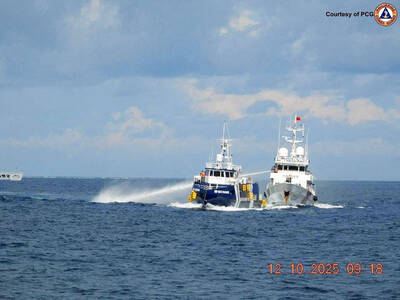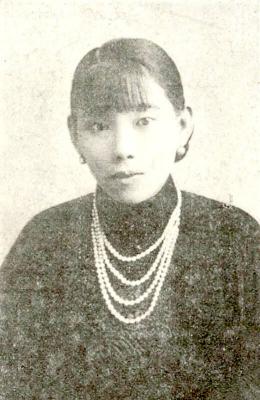For Aboriginal singer/songwriter Ilid Kaolo (以莉‧高露), bossa nova is not merely a music genre — it’s a lifestyle.
Kaolo, who released her debut album My Carefree Life (輕快的生活) to great acclaim last week, will perform two free concerts in Taipei over the next week: at Eslite Xinyi Music Store (信義誠品音樂館) tonight and at Eslite Dunnan Music Store (誠品敦南音樂館) on Wednesday.
Kaolo’s album contains 10 songs she has written over the past decade, six in Amis and four in Mandarin, that blend folk with jazz and bossa nova.

Photo Courtesy of Wind Music
“There are no big theories with my music,” Kaolo told the Taipei Times in a phone interview last week. “I hope it will calm your heart and help you reflect on what you want from life.”
The title track, My Carefree Life, is a laid-back pop gem celebrating a pastoral lifestyle.
“This song is about my memory of the agricultural life in Hualien,” the Amis songstress said. “Watching the breeze blowing at the rice harvest was a wonderful experience.”
In the second single, Charming Eyes (迷人的眼睛), Kaolo uses her sultry, jazzy vocals to encourage modern women to be brave and hold up their heads when facing romantic disillusionment in the urban jungle.
Born in Hualien, Kaolo moved to Taipei at 7 years old and made the city her home for three decades. She started performing with Formosa Aboriginal Song and Dance Troupe (原舞者) in her early 20s and moved on to join the Aboriginal niche label Wild Fire Music (野火樂集) in recent years under the nickname of Hsiao-mei (小美).
In 2006, she joined Hohak Band’s (好客樂隊) agricultural project in Taitung, farming organic rice by day and writing music by night. She returned to her hometown of Hualien last year to continue farming and work on her debut album.
“My life in Taipei was hectic,” Kaolo said. “I went to gigs to perform and had fun with friends and never thought about releasing an album. The farming life allows me to calm my mind and reflect on life. These songs are letters to friends that I wanted to pass on, but never sent.”
As an Aboriginal performer who has experienced the glamorous night life of Taipei and then reclaimed her connection to the earth through farming, Kaolo wants audiences to find peace of mind in her music.
“You can listen to these songs when you want to chill,” she said. “I would be honored if you feel these songs can relax you and ease your loneliness.”

Many people noticed the flood of pro-China propaganda across a number of venues in recent weeks that looks like a coordinated assault on US Taiwan policy. It does look like an effort intended to influence the US before the meeting between US President Donald Trump and Chinese dictator Xi Jinping (習近平) over the weekend. Jennifer Kavanagh’s piece in the New York Times in September appears to be the opening strike of the current campaign. She followed up last week in the Lowy Interpreter, blaming the US for causing the PRC to escalate in the Philippines and Taiwan, saying that as

US President Donald Trump may have hoped for an impromptu talk with his old friend Kim Jong-un during a recent trip to Asia, but analysts say the increasingly emboldened North Korean despot had few good reasons to join the photo-op. Trump sent repeated overtures to Kim during his barnstorming tour of Asia, saying he was “100 percent” open to a meeting and even bucking decades of US policy by conceding that North Korea was “sort of a nuclear power.” But Pyongyang kept mum on the invitation, instead firing off missiles and sending its foreign minister to Russia and Belarus, with whom it

The Chinese Communist Party (CCP) has a dystopian, radical and dangerous conception of itself. Few are aware of this very fundamental difference between how they view power and how the rest of the world does. Even those of us who have lived in China sometimes fall back into the trap of viewing it through the lens of the power relationships common throughout the rest of the world, instead of understanding the CCP as it conceives of itself. Broadly speaking, the concepts of the people, race, culture, civilization, nation, government and religion are separate, though often overlapping and intertwined. A government

Nov. 3 to Nov. 9 In 1925, 18-year-old Huang Chin-chuan (黃金川) penned the following words: “When will the day of women’s equal rights arrive, so that my talents won’t drift away in the eastern stream?” These were the closing lines to her poem “Female Student” (女學生), which expressed her unwillingness to be confined to traditional female roles and her desire to study and explore the world. Born to a wealthy family on Nov. 5, 1907, Huang was able to study in Japan — a rare privilege for women in her time — and even made a name for herself in the